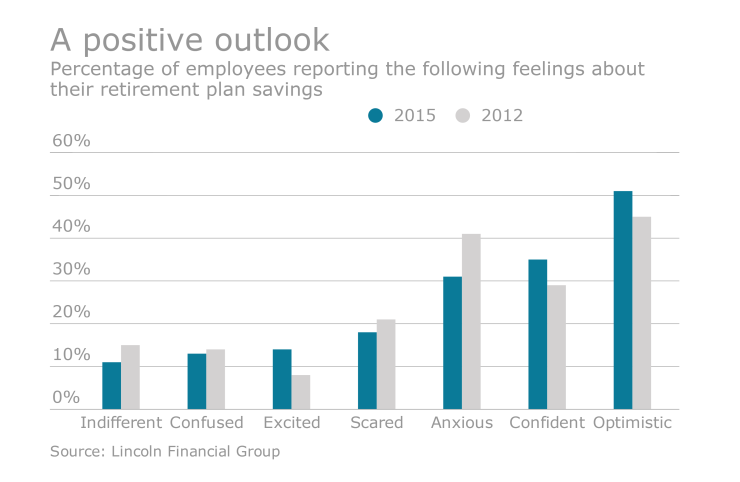Retirement planners need to hone their message to younger workers and target them specifically to inspire them to plan for retirement, a new survey from OneAmerica suggests.
Employees born after 1982 are more open to new technology and listen to plan sponsors, the study reveals, but they are distracted by the immediate concerns of college and credit card debt. They also think about retirement less often than their older counterparts.
Retirement planners need age-specific strategies, rather than a one-size-fits-all approach, says Kara Clark, marketing director of OneAmerica.

The main takeaway from the survey of 10,500 participants is the importance of “targeted communications and the importance of communicating with millennials [in a way] that will resonate with them,” she says.
“One surprising result of the survey was the role that plan sponsors play. More than any other demographic, younger employees are in tune with what plan sponsors are saying,” Clark says. “That really resonates with the younger generation.”
See also:
Clark says the biggest influence for all generations is friends and family.
The survey found that frequency of retirement thoughts increase as the employee ages, with a steep increase between those who are 35–49 years old and those 50 or older. Twenty-three percent of men and women younger than 35 consider retirement on a weekly basis, compared to 27% of those 25-49 and 45% of those 50 and older.
The millennial generation — those born after 1982 — are aware of the challenges of saving for retirement due to the burden of debt that an average American accrues in his or her 20s.
“A lot of millennials are dealing with student loan debt, and they are delaying buying homes and making major purchases. Those are more immediate needs to be addressed because retirement is so far away,” says Clark. “It is hard for them to fathom that what they do now will make a difference in the future.”
See also:
What about using social media to reach millennials? Interestingly, the tried-and-true methods of face-to-face meetings and printed plan materials fare better.
“We did ask about newer forms of technology, and as we see in other industries where younger people tend to prefer newer forms of communication, this only goes so far,” Clark says.
Retirement and financial planning on Snapchat and Google Glass have not taken off, she says. “People are looking at e-mail, and print communication is very important for older generations. Face-to-face conversation — the human touch — is still important [as well].”
While some workers will always respond to the latest flashy technology and the newest forms of communication, Clark says, “the reliable methods are going to be the most objective.”
In other survey results, respondents 50 and older check their retirement status the most often (48% monthly), followed by those younger than 35 (44%), and lastly those 35–49 (40%). Fifty-five percent of those who are older than 50 say retirement is very important, compared to 49% of those 35–49 and 47% of those younger than 35.
OneAmerica conducted its online poll between Aug. 27, 2015, and Jan. 31, 2016. Twenty-nine percent of respondents were ages 18 to 34, 25% were ages 35 to 49, and 36% were ages 50 and older. Some respondents declined to provide their age.





